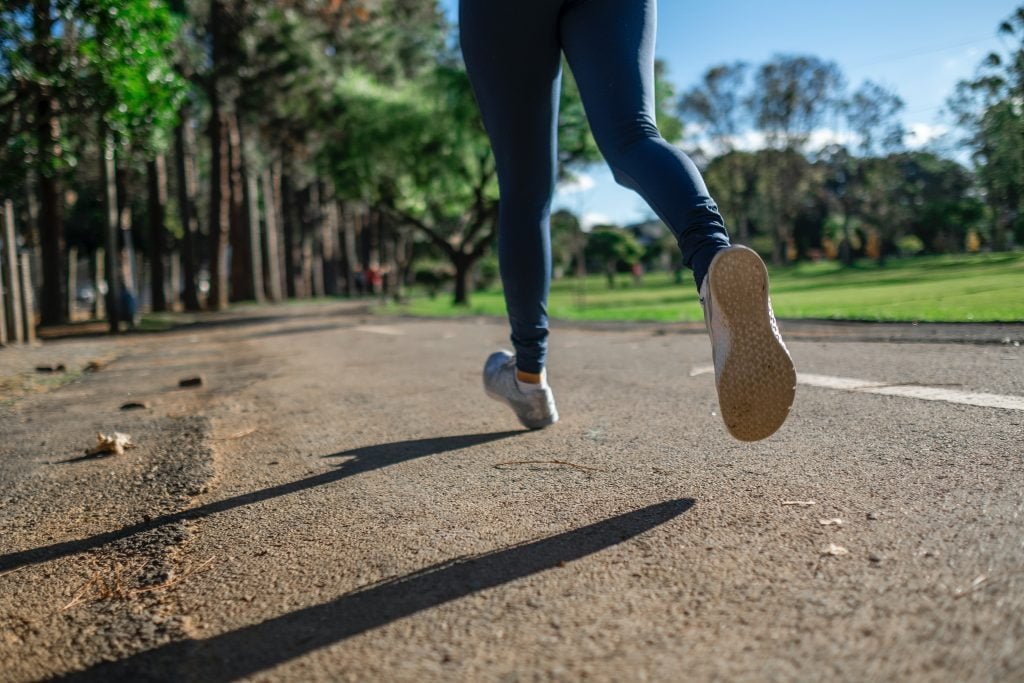
I’m always interested in what’s popular, and recently the 10,000 steps per day challenge caught my eye. Naturally, this is nothing new; for years, the standard goal for anyone looking to increase their movement has been to walk 10,000 steps per day.
Making a goal of walking 10000 steps a day, in any weather, whether outside or on a treadmill. The goal of the challenge is to move your body and get some daily exercise, much like how the hot girl walks. Some people have even shared at-home walking exercises where you walk continuously until you reach your objective.
There are many advantages to increasing your daily step count, whether you’re walking for weight loss or simply changing how you commute to work. Here are all the various ways that walking for 30 minutes each day can improve your health. Additionally, we’ve discovered the top under-desk treadmills for increasing your mileage while you work as well as walking-paying apps. It’s important to keep in mind, though, that before attempting any fitness challenge, you should consult your doctor if you’re a complete beginner or you’re returning to exercise after an injury.
Walking 10000 Steps A Day Weight Loss

Aiming for 10,000 steps per day is a good goal if you’re trying to lose weight. A typical person who meets that daily goal will burn up to 3,500 calories per week, according to the American Council on Exercise.
In general, moving around requires more energy for heavier people than for lighter ones. For a person weighing 180 pounds, the majority of rough estimates center around 100 calories burned per mile.
10,000 steps will typically equal about 5 miles on average. In that case, yes, 100 calories multiplied by 5 miles, assuming you weigh 180 pounds, equals 500 calories. That adds up to 3,500 calories per week.
In that same mile, you would only burn 60 calories if you weighed 120 pounds. When multiplied by seven days, that comes to 2,100 calories, leaving you 1,400 calories short of the 3,500-calorie target.
The goal of 10,000 steps was first promoted in 1965 by a Japanese company that was getting ready to release a product called a Manpo-Kei (it means 10,000 steps per meter). The International Journal of Behavioral Nutrition and Physical Activity reviewed 32 studies, and concluded that “10,000 steps per day is a reasonable target for healthy adults.”
10000 Steps A Day In Miles Or KM
10,000 steps are equal to five miles. Since the average walking stride is between 2.1 and 2.5 feet long, it would take them more than 10,000 steps to complete a 5 mile.
Walking 10,000 steps equates to about eight kilometers, or an hour and 40 minutes of walking, depending on your stride length and walking speed. Naturally, the longer your stride will be the taller you are.
What Does Walking 10000 Steps A Day Do For You?
Reaching 10,000 steps per day wasn’t too difficult for me because I run, work as a fitness editor, and walk my dog. I was halfway there before sitting down at my desk because I begin each day with a three-mile walk with my excitable cocker spaniel. I have relatively long steps because I am also fairly tall (6 foot 3 inches). With this challenge, my height worked in my favor once again.
About a week into the challenge, I made the decision that I wanted to try to walk more than 10,000 steps per day and actively consider forgoing opportunities to ride the bus or in a car in favor of walking. While trying to quicken my pace, I also focused on my form. In order to avoid overstriding, good walking form involves keeping your head up, working your core, and keeping your steps under your body. I discovered that walking while picturing my abs tightening was a great way to work my core.
Additionally, I discovered that I needed to spend money on a good pair of walking shoes or cozy hiking boots. I chose the Skechers Go Walk Workout Walker for the majority of my sidewalk strolls, but I quickly realized that I would need to purchase a pair of the best hiking boots for winter miles because it was uncomfortable trying to reach 10,000 steps in gumboots.
To pass the time if you find yourself getting bored easily, I’d suggest listening to podcasts or audiobooks. You should also pick new places to walk; I’ve used the AllTrails app to find new places to walk on the weekends.
What did I discover after walking more than 10,000 steps every day for a month? I genuinely love taking walks, especially outside. I missed my early morning walks in the woods on days when my dog went to his dog walker, so I would get off the Tube a stop early to try to squeeze in some exercise before heading to the office. My body didn’t seem to have changed much, but I wasn’t trying to lose weight.
Also Read- How to Sleep Naturally: 18 Tips to Better Sleep Habits
You Can’t Ignore Your Diet

There is no denying that walking increases daily calorie expenditure. Walking 10,000, 15,000, or even 20,000 steps per day might not be enough to significantly reduce body fat or improve body composition if you don’t know your net caloric balance. You must burn more calories than you consume in order to lose weight. We refer to checking the calorie chart.
Let’s say, for instance, that you need 1,800 calories daily to maintain your current weight but only consume 2,300. You would only be bringing yourself to a net caloric balance of zero, meaning the 10,000 steps you are taking are only aiding you in maintaining your current weight, not losing it, even if your 10,000 steps equal 500 calories burned.
Walking 10000 Steps A Day Benefits
Even though my goal for this challenge wasn’t weight loss, I did hope that by the end of the month, my jeans would feel a little looser. A warning: they didn’t. It is obvious that low-intensity walking is insufficient on its own if weight loss is your primary objective.
However, quickening your stride when you’re walking might help. The NHS suggests brisk walking as a form of exercise because it can help you increase stamina, burn extra calories, and improve the health of your heart. It’s not necessary to walk for hours. The physical activity guidelines for adults aged 19 to 64 recommend 150 minutes of exercise per week, which can be met with a brisk 10-minute walk each day.
Despite the fact that I couldn’t tell a difference on the scales, who cares? I did see a change in my level of fitness. By the end of the month, I could tell that my glutes were getting firmer and that I was breathing easier after each walking session.
Regarding my mental health, I discovered that walking was a fantastic stress reliever (especially on the treadmill where I could use the fastest setting). I had the impression that with each step I was overcoming the anxiety that had accumulated over the course of the day, week, or month and letting go of the bad energy I had been clinging to. I finally felt the post-workout endorphins that everyone has been raving about when I got off the treadmill. I always felt lighter!
Also Read- 8 Easy Keto Diet Recipes for Weightloss
